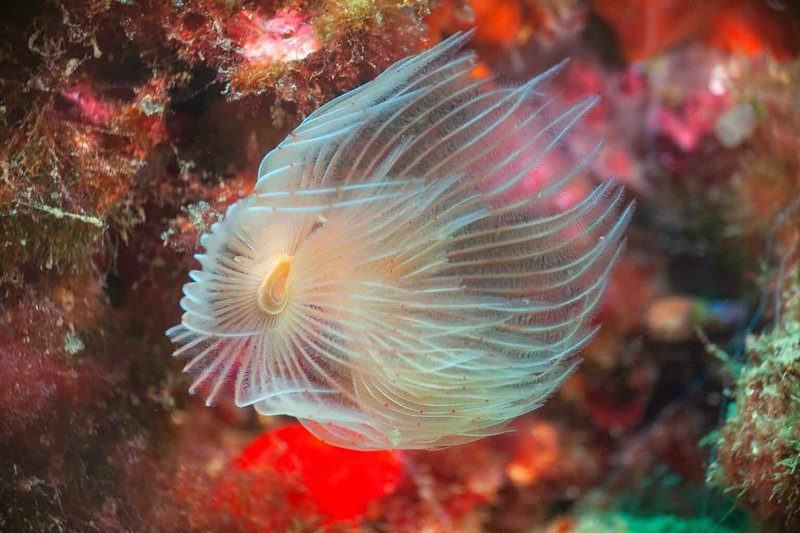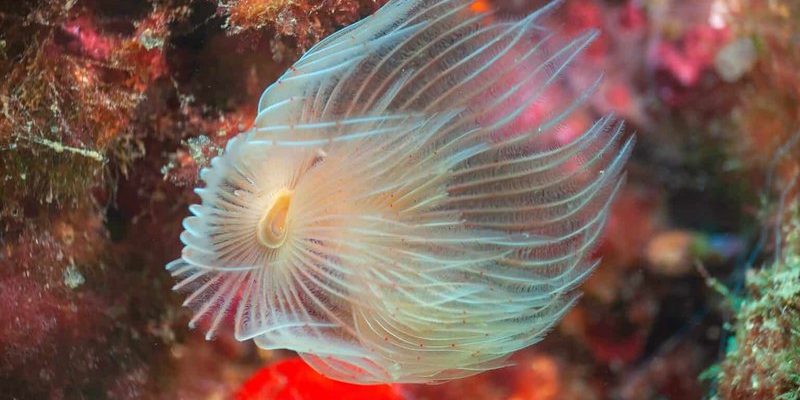
Bristle worms belong to a larger group known as polychaetes, which translates to “many bristles.” You might picture a tiny, wiggly creature covered in hair-like bristles, and you’d be spot on! These worms play a unique role in their ecosystems, and understanding their diet helps us appreciate their complexity. So, grab a cup of coffee, and let’s dig into the bristle worm’s culinary preferences—because knowing what they eat can help you understand their place in the marine food web.
What Are Bristle Worms?
Before we dive into their diet, let’s get to know bristle worms a bit better. These worms are found all over the world, usually nestled in ocean sediments or coral reefs. Depending on the species, they can range from just a few millimeters to over a meter long, making them incredibly diverse.
Bristle worms are easily identifiable by their numerous bristles, which are called chaetae. These bristles can be quite sharp and serve several purposes, like helping the worms move and deterring predators. So, when you see a bristle worm, you’re looking at a survivor that’s well-equipped for its environment.
These creatures are often classed as either **scavengers** or **predators**, and that’s what we’ll explore next.
Bristle Worms: Scavengers in Action
Many bristle worms function as scavengers, eating decaying organic matter that sinks to the ocean floor. Think of them as nature’s clean-up crew, munching away at dead plant and animal material. This role is crucial for the health of their habitats, as it helps recycle nutrients back into the ecosystem.
When organic matter settles to the bottom, bristle worms detect it through chemical cues in the water. They quickly move in, using their bristles to burrow into the substrate and feast on the nutrients. It’s a bit like a buffet for them!
Moreover, bristle worms can eat a variety of other detritus, including algae and plankton. This broad diet allows them to thrive in diverse environments, from coral reefs to muddy ocean floors. So, if you’re thinking about adding bristle worms to your aquarium, remember that they’re excellent at keeping things tidy!
The Predator Side of Bristle Worms
While many species of bristle worms are scavengers, some have a more predatory side. These worms can actively hunt smaller marine creatures, like crustaceans and even other worms. For them, it’s a bit more like a game of hide-and-seek.
Predatory bristle worms use their specialized feeding structures to grab their prey. They can sense movement and vibrations in the water, allowing them to hone in on potential meals. Once they find their target, they strike quickly, using their bristles to latch on and hold tight while they eat.
Consider a bristle worm as a stealthy predator navigating through the shadows of the sea—quiet, cunning, and always on the lookout for their next meal. This duality in their diet makes them fascinating creatures that play different roles depending on their species and environment.
How Bristle Worms Find Food
You might be wondering how bristle worms manage to find food so effectively. Well, these little creatures have an impressive sense of smell, which helps them locate organic materials and potential prey. Their antenna-like structures—their sensory organs—are incredibly sensitive to different scents in the water.
When they detect food, bristle worms will follow the chemical trail, often retreating into their burrows if they feel threatened. This ability to sense food from a distance is critical for their survival, especially in the vast ocean where resources can be spread thin.
In a way, you can think of their feeding strategy as similar to a detective following clues to solve a mystery. Every whiff of decaying matter or a potential prey item gets them closer to a satisfying meal.
The Impact of Bristle Worms on Their Ecosystem
Bristle worms play a significant role in their ecosystems. By consuming dead organic material, they help break it down and recycle nutrients. This process nourishes the sediment and promotes the growth of plants and algae, which, in turn, supports an entire community of marine life.
However, they also have a role in controlling pest populations. Predatory bristle worms help keep populations of smaller creatures in check, contributing to a balanced ecosystem. Imagine a dynamic team of cleaners and hunters, all working together to keep the environment healthy and thriving.
On the flip side, too many bristle worms can signal a problem, like excess organic waste in the water. This imbalance could lead to overpopulation, which might disrupt local marine life. So, while bristle worms are vital, maintaining the right balance is crucial.
Feeding Habits: A Closer Look
When it comes to their feeding habits, you might wonder just how bristle worms consume their food. For scavengers, it’s often a matter of sifting through sediment, munching on whatever they find. This can include decomposed plant matter, dead fish, or even other small invertebrates.
For predatory species, the process is a bit more complex. They typically have a head with a more pronounced mouth, equipped with jaws allowing them to grasp and consume larger prey. Watching a bristle worm eat is like witnessing a mini chase scene—swift and efficient.
Additionally, their feeding can be influenced by their surroundings. In nutrient-rich areas, scavenging might be easier, while in areas with fewer resources, they might resort to predation more often. This adaptability allows bristle worms to thrive in various environments, showcasing their resilience and versatility.
The Bottom Line: Scavenger or Predator?
So, are bristle worms scavengers or predators? The truth is, they can be both! Depending on their species and environment, these intriguing creatures can switch roles. In one moment, they might be cleaning up the ocean floor, and in the next, they could be hunting for their next meal.
Understanding the bristle worm diet not only helps us appreciate these unique animals but also highlights the importance of their role in marine ecosystems. Whether they’re scavenging or hunting, bristle worms are key players in keeping our oceans healthy.
So, next time you hear about bristle worms, remember their dual nature. They’re more than just creepy critters; they’re essential members of marine life, balancing the roles of scavenger and predator in their underwater world.

